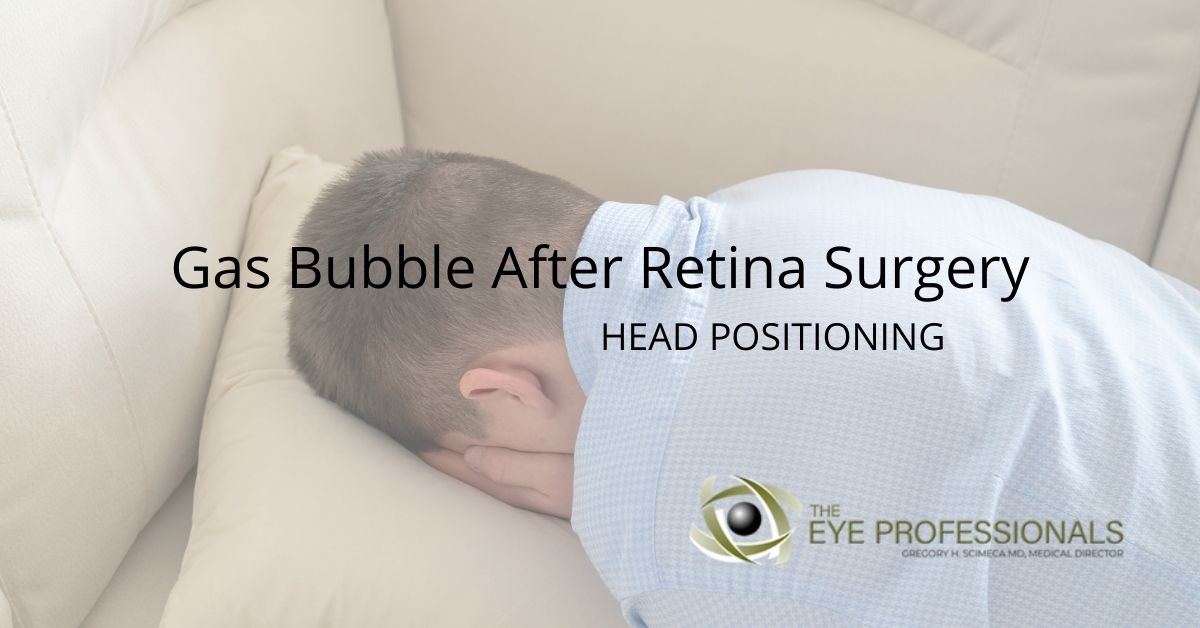

In nonvitrectomized eyes with a retinal detachment repaired by pneumatic retinopexy or scleral buckling surgery with gas bubble placement, I prefer that the macula reattaches immediately postoperatively. This could improve the postoperative gas fill by as much as 15%. After the air-fluid exchange, consider waiting several minutes for the remaining fluid within the residual vitreous to trickle down to the posterior pole so that it can be removed. If substantial vitreous remains in the eye at the end of the surgery, then there could be an under fill of gas postoperatively because the remaining vitreous occupies volume in the vitreous cavity. Optimizing the gas fill in eyes undergoing vitreous surgery requires a complete vitrectomy. The longevity of the gas bubble varies among patients but is typically about 3 to 5 days for air, 2 to 3 weeks for SF 6, and approximately 6 to 8 weeks for C 3F 8. 1 Phakic eyes allow the gas to remain longer inside the vitreous cavity. The longevity of gas within the vitreous cavity varies and depends on the type of gas used, concentration of gas, volume of gas, volume of the vitreous cavity, and lens status of the eye. The gas bubble needs to appose the specific pathology. For some macular holes, giant retinal tears, inferior retinal detachments, or complex or chronic retinal detachments, particularly with proliferative vitreoretinopathy, a nonexpansile concentration of a longer-acting gas bubble, such as 14% C 3F 8, is preferred by most surgeons. For some acute retinal detachments and macular holes, a nonexpansile concentration of a shorter-acting gas bubble, such as 20% SF 6, may be chosen. In a vitrectomized eye, sterile air can be used for a superior intraoperative retinal break. In general, in a nonvitrectomized eye undergoing pneumatic retinopexy or scleral buckling surgery, up to 0.6 mL of sterile air, 0.6 mL of 100% SF 6, or 0.3 mL of 100% C 3F 8 can be used.

The time frame required for the gas bubble to remain in contact with such pathology depends on the pathology itself, and this influences the type and concentration of gas used. The most common reasons to use a gas bubble are to tamponade a retinal break, repair a retinal detachment, or repair a full-thickness macular hole. The decision to place a gas bubble into an eye is based on multiple factors. While there are no specific guidelines for the type or concentration of gas to be used or the type and duration of postoperative head positioning to treat various vitreoretinal pathologies, there are a few general principles that guide these decisions. There are 3 main types of intraocular gas used in eyes with vitreoretinal pathology: air, sulfur hexafluoride (SF 6), and perfluoropropane (C 3F 8). If you continue to have this issue please contact to Healio


 0 kommentar(er)
0 kommentar(er)
